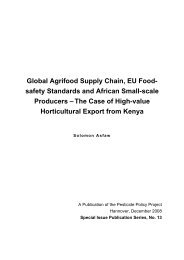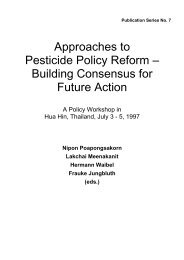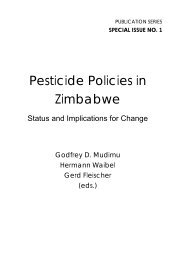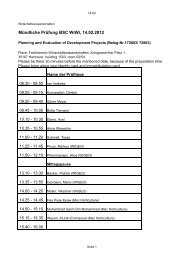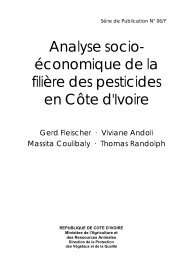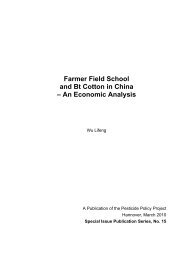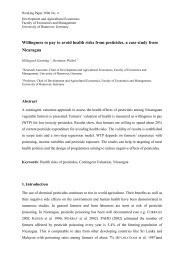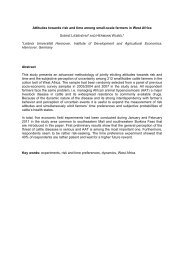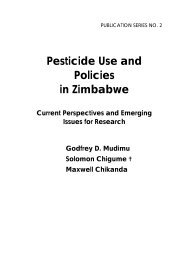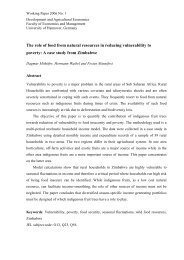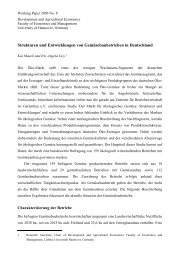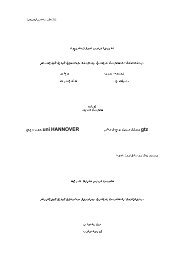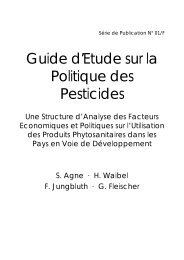PPP Special 08 - Institut für Entwicklungs- und Agrarökonomik
PPP Special 08 - Institut für Entwicklungs- und Agrarökonomik
PPP Special 08 - Institut für Entwicklungs- und Agrarökonomik
Create successful ePaper yourself
Turn your PDF publications into a flip-book with our unique Google optimized e-Paper software.
23<br />
Table 4.7:<br />
Average number of pesticide applications per pest<br />
and farmer<br />
Average number of pesticide<br />
applications against sucking<br />
pests [appl./farmer]<br />
Non-Bt cotton 1.45 1.10<br />
Bt cotton 1.20 0.59<br />
Source: Own Calculation, 2002<br />
Average number of pesticide<br />
applications against bollworm<br />
pests [appl./farmer]<br />
Table 4.8 presents the average number of pesticide applications for<br />
bollworm and sucking pests<br />
Table 4.8:<br />
Classification of pesticides<br />
Common Name Chemical Class<br />
Monochrotophos Organophosphate 1b<br />
Endosulfan Organochlorine 2<br />
Dimethoate Organophosphate 2<br />
Quinalphos Organophosphate 2<br />
Cypermethrin Pyrethroid 2<br />
Profenofos Organophosphate 2<br />
Note: WHO Classification of Pesticides: 1a: extremely hazardous, 1b: highly<br />
hazardous, 2: moderately hazardous<br />
Source: WHO, 2003<br />
The most frequently used pesticides on both Bt and non-Bt cotton for<br />
sucking pests were monochrotophos, endosulfan and dimethoate<br />
(Figure 4.4). For bollworm, the most frequently applied pesticides were<br />
profenofos and endosulfan. As given in Table 4.8 these pesticides<br />
belong to the WHO classes 1b or 2. The remaining compo<strong>und</strong>s were of<br />
lesser relevance in the study area.



